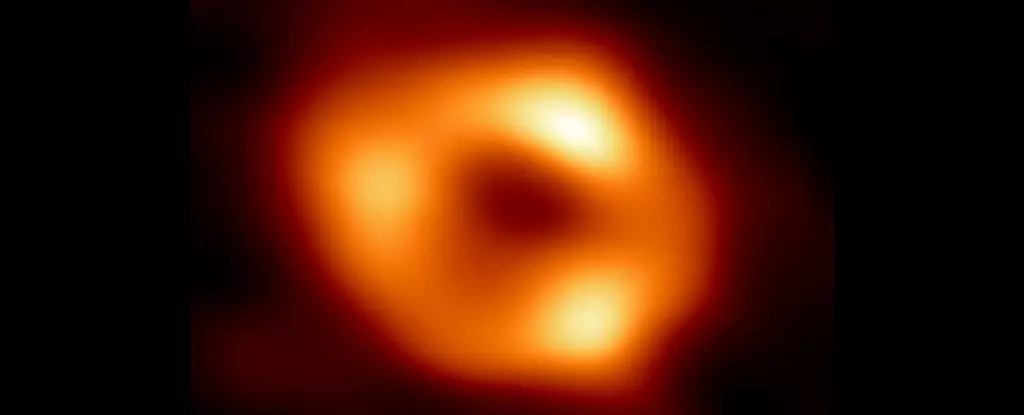The release of the first image of Sagittarius A* (Sgr A*), the supermassive black hole located at the center of our Milky Way galaxy, marked a significant achievement in astrophysics. This iconic representation, unveiled in 2022, showcased a bright ring structure enveloping a dark void that symbolized the mysterious dynamics of black holes. However, recent research from the National Astronomical Observatory of Japan (NAOJ) suggests that our initial understanding may require adjustment, prompting a reevaluation of what lies at the heart of our galaxy.
At the core of this debate is the absence of a definitive methodology in analyzing the data collected by the Event Horizon Telescope (EHT)—an intricate network of eight radio telescopes spread across the globe that collectively captured Sgr A*. Researchers at NAOJ implemented alternative analytical methods to scrutinize the same data set, leading to the revelation that the accretion disk surrounding Sgr A* might not possess the circular shape previously assumed. This new hypothesis posits a more elongated structure that implies complex motion and distribution of matter around the black hole.
Miyoshi Mikato, an astronomer at NAOJ, articulated the potential shortcomings in the original image processing, indicating that what appeared as a rounded shape could partly be a product of imaging inaccuracies. The challenge of analyzing radio interferometry data is well-known—it is riddled with artifacts and gaps, leading to varying interpretations. Both the EHT’s initial observations and the NAOJ’s reassessment illustrate the inherent difficulties within astronomical imaging, and how different techniques can yield contrasting outcomes.
The interpretation of the accretion disk’s shape is not merely an academic exercise; it has profound implications for understanding the behavior of matter swirling around black holes. The newly analyzed data from NAOJ indicates that the accretion disk is elongated in the east-west direction, with the eastern portion exhibiting a brighter glow. This brightness discrepancy is hypothesized to stem from a Doppler effect, suggesting high-velocity rotations as the material spirals into the gravitational abyss.
The interaction of various factors like the spin of the black hole, the rate at which material accumulates, and the specific angular momentum of that material can fundamentally alter the accretion disk’s morphology. Additionally, the gravitational pull itself creates a warping effect, distorting our perspective much like looking into a funhouse mirror. Thus, both the EHT’s rounded depiction and the NAOJ’s elongated view could coexist as relatable interpretations of the complex physical phenomena at play.
The initial EHT image served as a groundbreaking attempt to visualize the spatial phenomena surrounding Sgr A*. As further studies are undertaken, including refinements in imaging techniques and methodologies, a clearer understanding of its accretion disk’s structure should emerge. The EHT consortium is committed to employing enhanced strategies to capture more accurate and detailed images of not only Sgr A* but also other enigmatic black holes scattered throughout the universe.
Through this continued effort, researchers aim to unveil the secrets hidden within the event horizon, enhancing our grasp of cosmic phenomena that challenge the boundaries of our understanding. Improved observational strategies could potentially reveal the intricate details of the accretion processes and the behavior of matter under extreme gravitational influences.
The discussion surrounding the shape of Sgr A*’s accretion disk underscores the complexities and limitations of astronomical observations. As scientists wrestle with the nuanced aspects of data collection and analysis, it is imperative to recognize that the quest for understanding the universe is filled with uncertainties. Each iteration of analysis brings us closer to comprehending the enigmatic nature of black holes, while simultaneously reminding us of the intricate balance between observation and interpretation.
As we accumulate more data and leverage advanced technologies in astronomical imaging, the clarity surrounding Sgr A* will inevitably improve. The ongoing dialogue between differing interpretations fosters a richer understanding of black holes, adding layers to our cosmic narrative and ensuring that the pursuit of knowledge remains both dynamic and exhilarating.


Leave a Reply